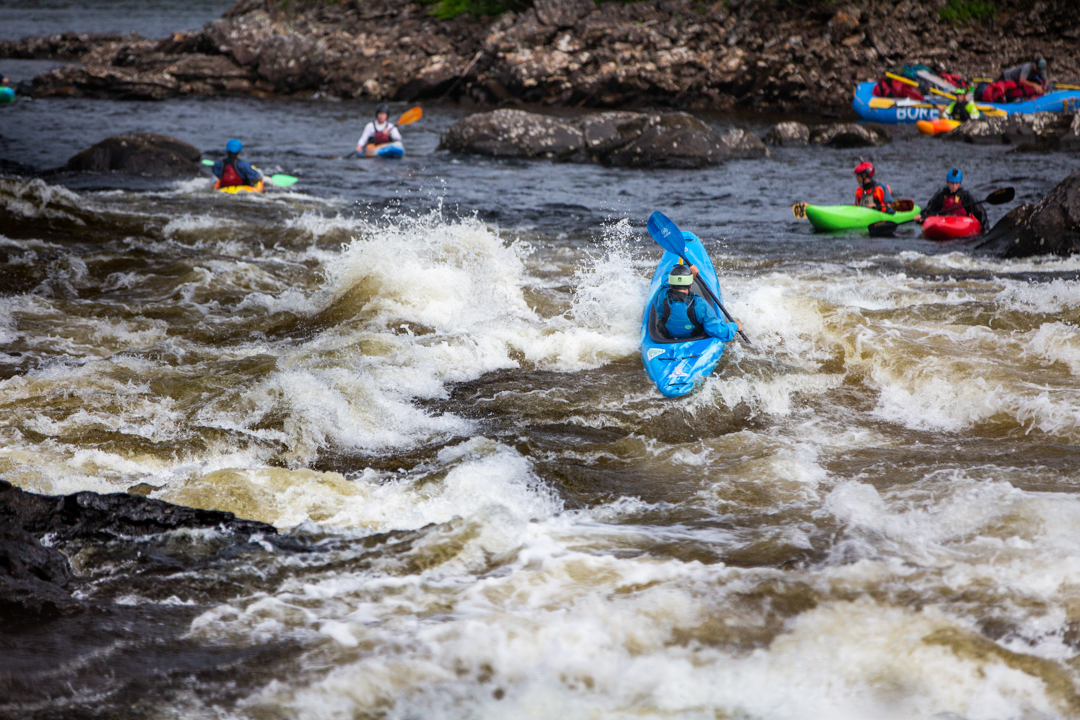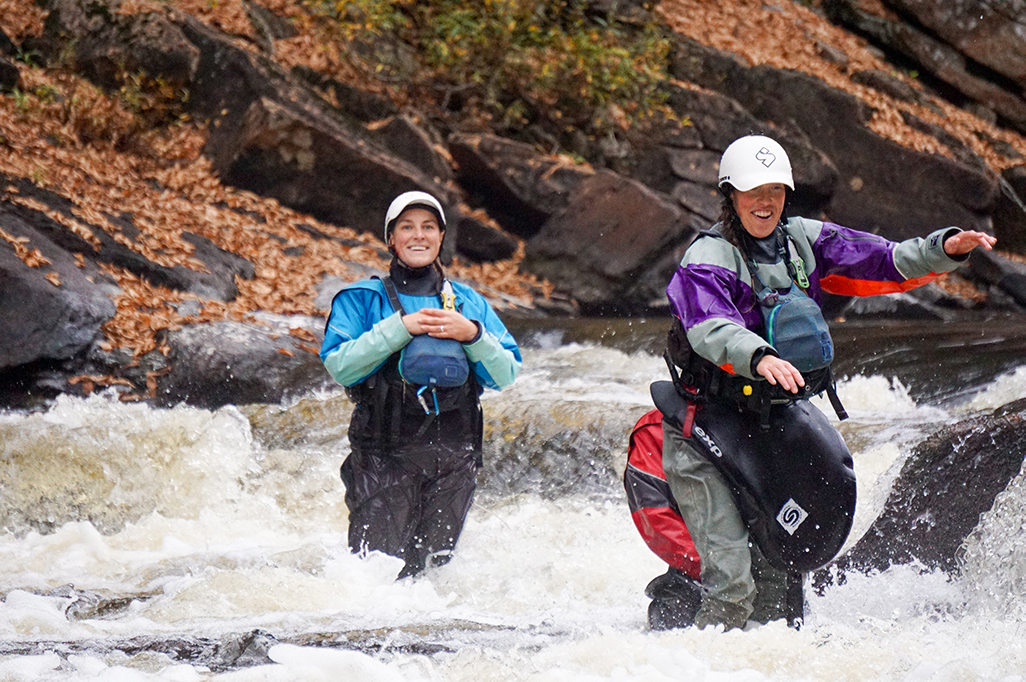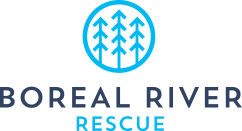3 tips to manage your group as a paddling instructor
Where you put yourself really matters.
Author: Willa Mason, Boreal River
“Why aren’t you waiting behind the rocks?” my apprentice instructor asks. He’s referring to a row of boulders that blocks our paddler’s otherwise straightforward path down the rapid.
“Sit with me. Watch their eyes as they come down,” I say, leaving him hanging.

We’re setting students up to run their longest set of rapids yet. It’s a simple descent with one important right-to-left maneuver near the end. Paddlers need to change directions, as the moving water could push them into the row of rocks.
When it comes to successfully running a rapid, there are many factors at play. As a leader, one of the most important is where you choose to put yourself. In our canoes, my apprentice instructor and I float in an eddy in the middle of the river. From here, we can see paddlers coming downstream. According to the plan we’ve already discussed as a group, their kayaks should be angled left by the time they pass us. They should be aggressively paddling towards the left, gaining momentum and avoiding the rocks.
The first student begins down the rapid, perfectly on target. Her eyes land on the row of rocks in her path, and she instinctively begins to tense up. We can see her tunnel vision narrow in on the must-be-avoided feature. I call out, and her eyes shift left, landing on my bright red helmet, big smile, and paddle signal reminding her to move towards us. In shifting her gaze, her body position has already changed, and the canoe starts moving away from the hazardous rocks. It’s as if her plan suddenly came flooding back, and she starts powering towards the calm eddy that marks her final destination.

From our spot in the middle of the river, we’re an easy-to-spot target. We have a great view of the rapid, so we can point the paddlers back on track if need be, and we are only a few seconds away from the hazardous rocks if anyone needs a helping hand. I point out to the apprentice instructor that although he was tempted to wait as close as possible to the potential rescue situation, our position should be more strategic than that. The ideal location will meet three criteria: be a visible target, have a good view, and be readily available for rescue.
1. Be visible: paddlers will look for you
The old age adage of “look where you want to go” rings true in whitewater. As a new or nervous paddler navigates down a rapid, they will look for their leader. Their eyes will scan the whitewater in front of them until they land on the comforting sight of the person waiting to help them out. If you station yourself right behind the scary rocks, dangerous tree, or retentive hydraulic, you’re giving them the wrong landmark. As they lock their eyes on you, they end up looking where they don’t want to go, which might lead them right into the hazard.
2. Have a good view: they might need directions
Is the desired path hard to spot from a boat? A paddle pointing in one direction or another can help paddlers make the adjustments needed for a successful run down the rapid. Choose to wait somewhere with a good vantage point, where you can see if the paddler needs to adjust their trajectory.
3. Be ready: consider where a rescue is most likely to occur
Where in the rapid are the paddlers most likely to flip? In which section of the rapid are they most likely to need rescue help? Note that these are not always the same location. A monster green wave may be almost guaranteed to flip a new paddler, but the calm lake below may be the perfect spot to put self-rescue skills to the test and make immediate rescue help unnecessary. A predictable, gentle current may be unlikely to flip a padder, but a log crossing half of the river may guarantee the need for immediate assistance if a problem were to arise.
By helping paddlers focus on where they want to go, pointing them in the right direction, and being ready for a rescue, leaders will maximize the likelihood of success for their new paddlers.
Links:
3 tips for teaching the most essential river skill: Stoke

